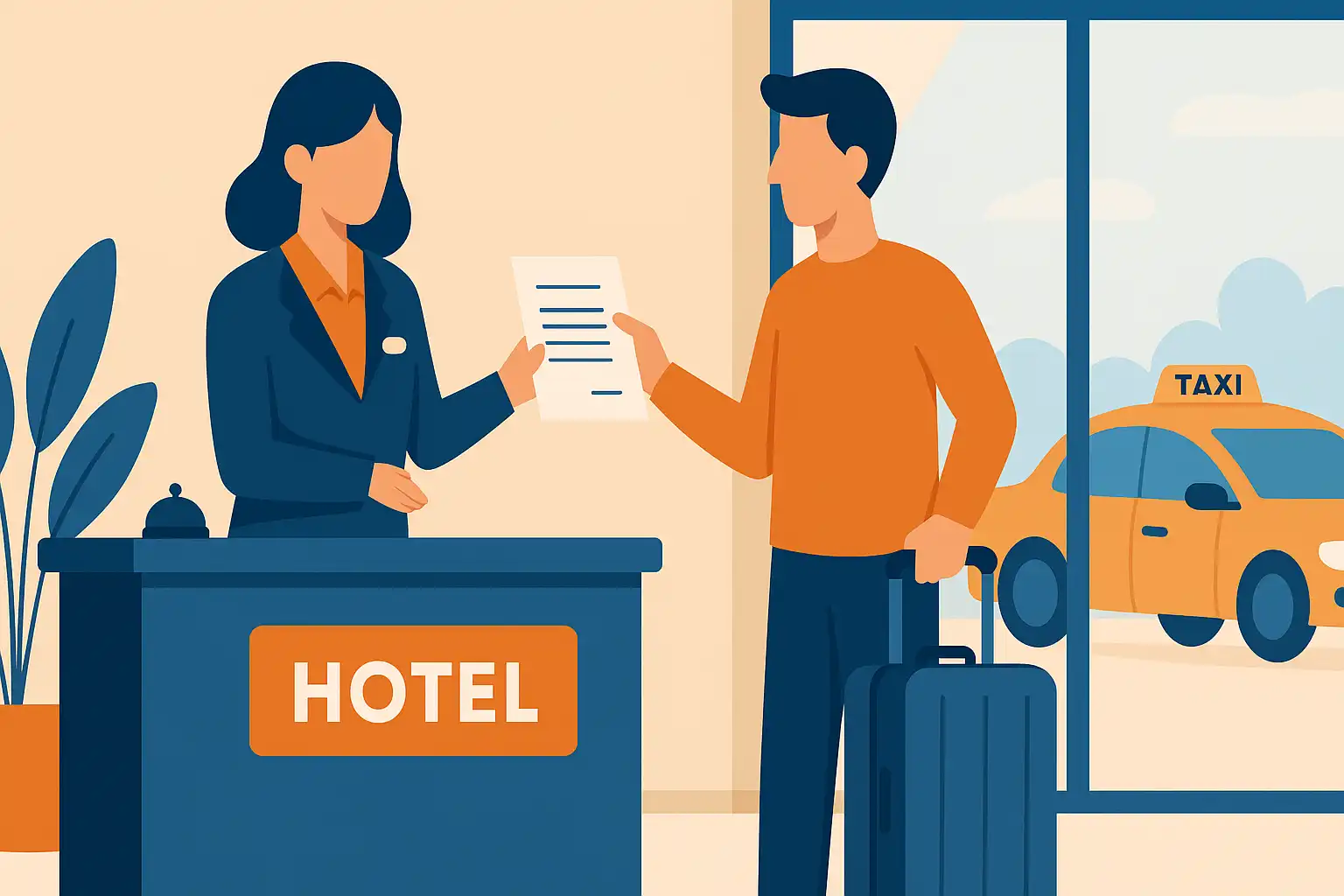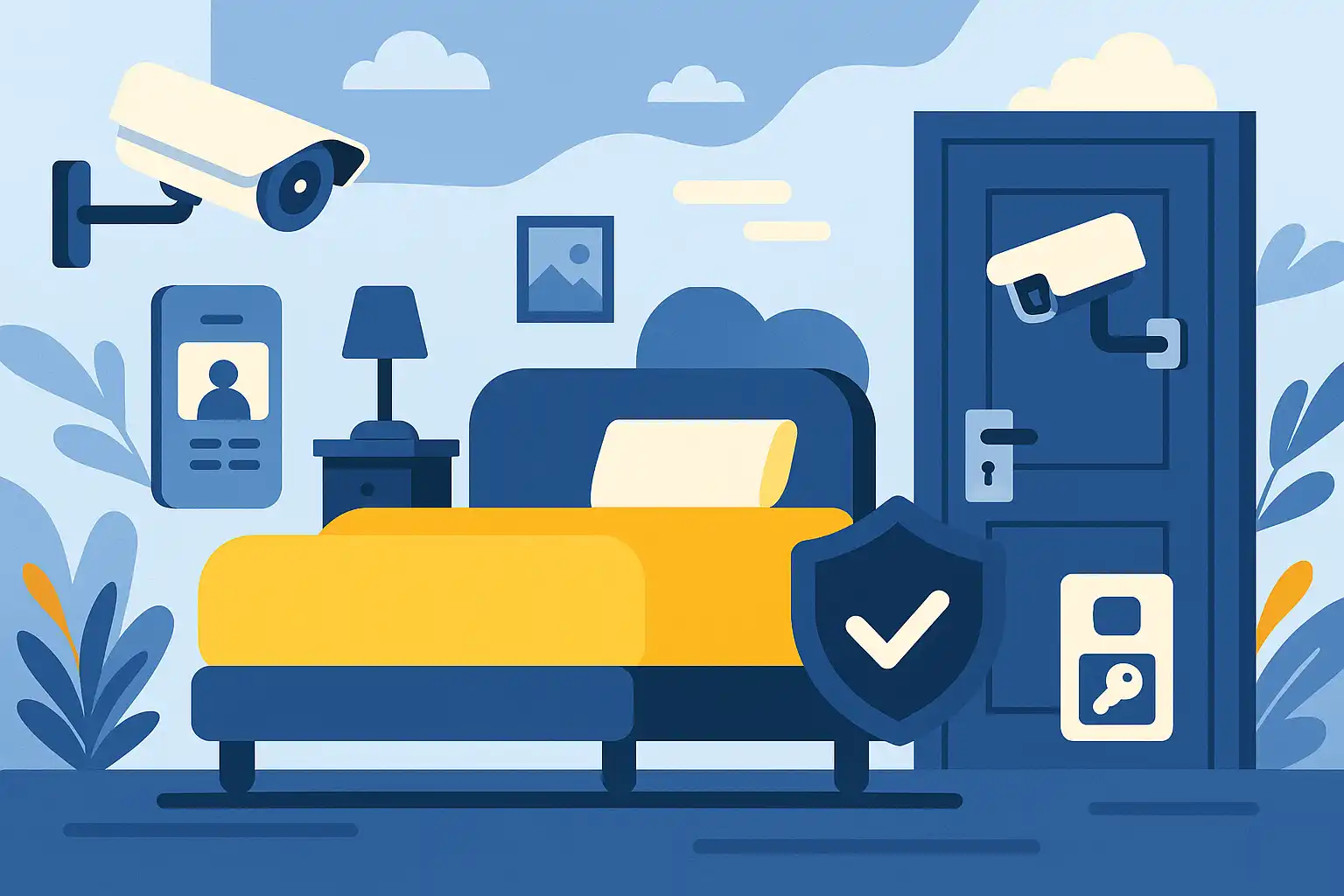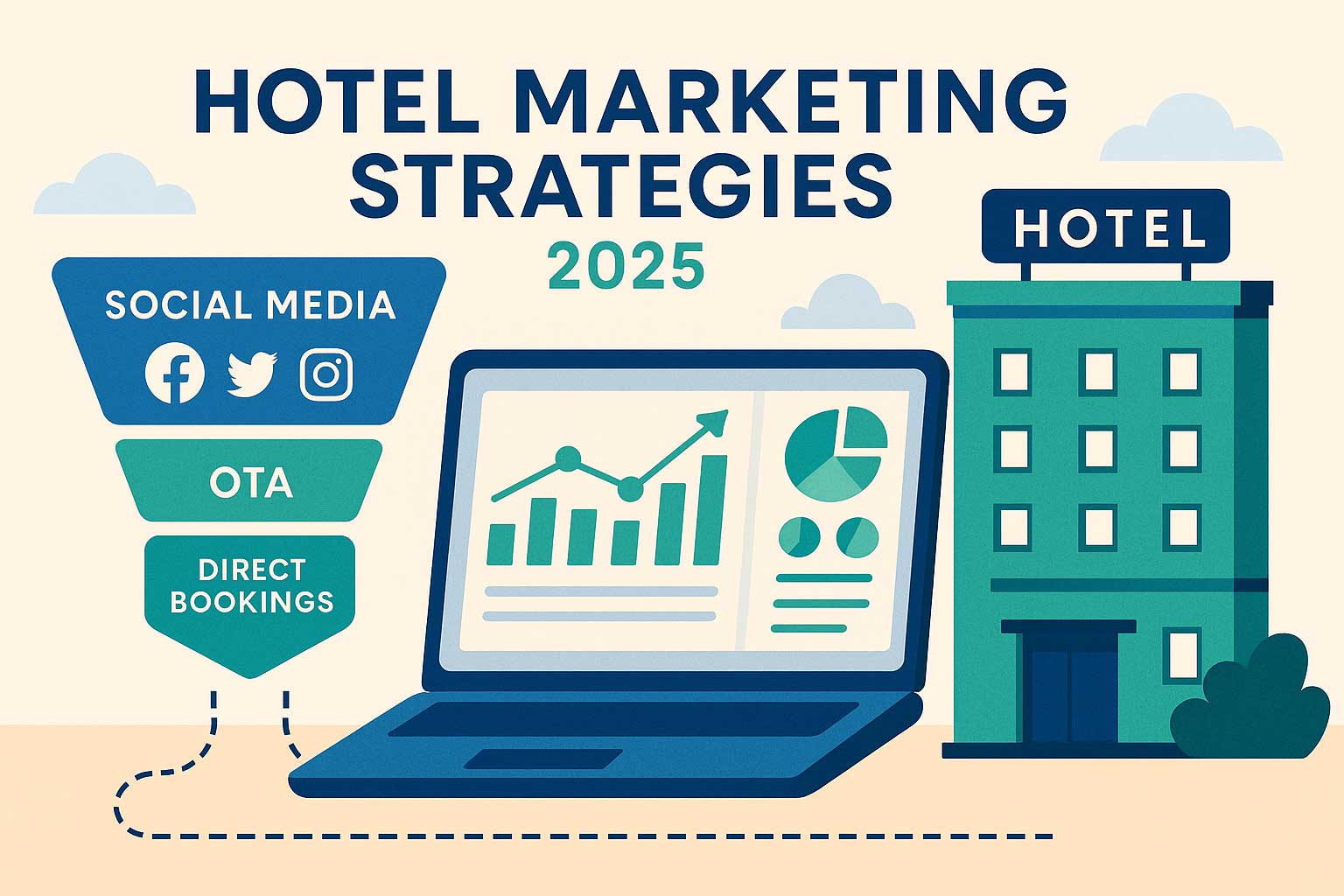Room Service Application: The Complete Guide to Digital Hotel Ordering Systems
Aug 15, 2025
 Mika Takahashi
Mika TakahashiPopular Categories
Hotel Technology & InnovationHotel Operations OptimizationDigital MarketingIndustry TrendsRevenue ManagementHospitality Industry
Popular Categories
Trending Post

Hotel Walk Letter Template: Professional Guest Communication

Online Travel Agents: What They Are and How They Work

Hotel Security Systems: Modern Protection Solutions

Hotel Advertising: Complete Guide to Boost Bookings and Revenue

25 Hotel Marketing Strategy Ideas for 2025: Complete Guide

AI Reservation Agent: Revolutionizing Hotel Booking and Guest Experience

PMS Communication: Streamlining Property Management Through Effective Guest Messaging
Table of contents
The hospitality landscape has been transformed by digital innovation, and nowhere is this more evident than in how hotels handle room service. Today’s travelers expect effortless, tech-savvy experiences, and room service is no longer just about picking up the phone. In fact, by 2023, more than half of leading hospitality operators have adopted digital ordering platforms, signaling a clear shift from the old-fashioned phone call to streamlined app-based systems.
A room service application fundamentally changes the guest dining journey. It offers a digital gateway where guests can explore menus, place orders, and track their delivery status—all from their smartphones or in-room devices. Beyond convenience, these systems have a tangible impact on hotel revenue, with many properties reporting food and beverage sales increases ranging from 10% to 35% after going digital.
In this guide, I’ll share insights drawn from years of consulting in hospitality tech, covering everything from the nuts and bolts of these applications to practical advice on choosing and implementing them. Whether you’re managing a boutique hotel or developing software solutions, understanding these tools is essential to elevating guest satisfaction and operational effectiveness.
What is a room service application?
At its core, a room service application is software designed to let guests browse hotel menus, place orders, pay, and monitor their requests—all without picking up a phone. These platforms replace the traditional, often cumbersome phone-based ordering process with user-friendly interfaces that mesh smoothly with a hotel’s existing management systems.

Core functionality and system integration
From my experience, the real strength of modern room service apps lies in their ability to act as central hubs connecting multiple hotel systems. When a guest taps “order,” that request is instantly routed to the kitchen’s point-of-sale system and simultaneously logged in the property management system. This dual integration ensures billing accuracy, verifies room status, and keeps inventory data up to date.
Behind the scenes, these platforms rely on secure payment gateways, real-time communication channels, and smart order routing. Hotel staff can update menus, manage special dietary needs, and oversee orders from intuitive dashboards. Meanwhile, guests benefit from transparency and control throughout the entire ordering process.
Digital transformation from traditional methods
Anyone who’s worked in hotel operations knows how error-prone and inefficient phone-based room service can be. Calls get dropped, orders are misheard, and handwritten tickets often lead to confusion in the kitchen. Moving to a digital room service application eliminates many of these headaches by standardizing order entry, automating notifications, and integrating payments.
The result? Significant efficiency gains. Properties I’ve worked with often see order fulfillment times cut by 20% to 40%, freeing staff to focus on delivering a better guest experience rather than chasing down orders.
Integration with hotel management systems
A critical factor in successful room service applications is seamless integration with a hotel’s existing tech stack. Linking with property management systems allows automatic posting of charges to guest folios and ensures room eligibility checks happen in real time. Integration with point-of-sale terminals means kitchen staff receive orders in formats they’re familiar with, improving accuracy and speed.
Further integrations with CRM platforms and loyalty programs enable personalized guest experiences and detailed reporting. The key is creating a cohesive ecosystem where data flows effortlessly, reducing manual work and minimizing errors.
Types of room service applications
Choosing the right type of room service application depends on your property’s profile, guest demographics, and operational goals. Each approach has its own strengths and trade-offs.
Native mobile applications
Native apps, built specifically for iOS and Android, offer the richest user experience. They support offline browsing, push notifications for real-time updates, and can leverage device features like GPS and mobile wallets.
For hotels targeting tech-savvy guests or loyalty program members, native apps provide excellent branding opportunities and detailed behavioral analytics. However, development and maintenance costs are higher, and convincing guests to download an app—especially for short stays—can be a hurdle.
Web-based ordering platforms
Web-based applications remove the barrier of app downloads by running in any browser. This approach suits hotels with diverse international clientele who may be reluctant to install new software.
These platforms are quicker to deploy and easier to update, though they generally lack some device-specific features and offline capabilities found in native apps.
QR code-enabled systems
QR codes have become ubiquitous in hospitality, offering a frictionless way for guests to access digital menus and ordering platforms. By simply scanning a code placed on menus, room keys, or common areas, guests can jump directly into the ordering experience.
This method requires minimal guest effort and works across all smartphone types, making it a favorite for properties aiming to boost adoption quickly without complex tech rollouts.
Hybrid ordering solutions
Many hotels find success with hybrid models that combine QR codes, web platforms, and native apps. Guests might begin with a QR code scan and later opt to download a native app for enhanced features and personalization.
This layered approach maximizes accessibility while catering to different guest preferences and technical comfort levels.
| Solution Type | Implementation Speed | Guest Adoption | Feature Richness | Maintenance Costs |
|---|---|---|---|---|
| Native Mobile App | 3-6 months | Moderate | High | High |
| Web Platform | 1-3 months | High | Moderate | Moderate |
| QR Code System | 2-4 weeks | Very High | Moderate | Low |
| Hybrid Solution | 2-4 months | High | Very High | Moderate |
Essential features in modern room service applications
The best room service applications strike a balance between comprehensive functionality and ease of use. Here’s what I’ve seen make a difference in real-world hotel settings.
Digital menu management and presentation
A dynamic digital menu is more than just a list of dishes. It should feature vivid images, detailed descriptions, and real-time availability. Smart categorization and search filters help guests find exactly what they want—even accommodating dietary restrictions or preferences.
Hotels that invest in professional food photography and clear menu layouts often see average order values rise by 15% to 25%. Including nutritional info and allergen warnings not only supports guest safety but also builds trust.
Order customization and special requests
Guests expect flexibility. Whether it’s adjusting spice levels, requesting gluten-free options, or noting allergies, the app should make it simple to communicate special instructions.
Capturing these requests in a structured, kitchen-friendly format is critical. When integrated with guest profiles, the system can remember preferences and suggest personalized options, enhancing the guest experience and encouraging repeat orders.
Real-time order tracking and communication
Transparency is key to guest satisfaction. Room service apps that offer real-time status updates—from order confirmation to delivery—keep guests informed and reduce anxiety.
In-app messaging or chat functions allow guests and staff to clarify requests or delivery details quickly. Integrating this communication with hotel staff platforms ensures smooth coordination across departments.
Secure payment processing and billing
Security and clarity around payments are non-negotiable. Room service applications must support PCI-compliant payment processing with options including room charge, credit cards, and digital wallets.
Displaying all charges upfront—service fees, delivery costs, and suggested gratuities—builds trust and reduces disputes. Integration with hotel billing systems streamlines checkout and supports loyalty program perks or app-exclusive promotions.
Benefits for hotels implementing room service applications
Digital room service isn’t just a guest convenience—it’s a strategic investment that pays dividends across operations.
Revenue optimization through 24/7 availability
Unlike traditional room service limited by staff schedules, digital platforms operate around the clock. This opens up revenue streams during off-hours, catering to late-night cravings or early risers without extra labor costs.
Hotels I’ve consulted with often report food and beverage revenue boosts between 10% and 18%, with some luxury properties seeing gains as high as 35%. The ability to serve international guests at any hour is a notable advantage.
Operational efficiency and cost reduction
Automating order taking reduces the burden on front desk and kitchen staff. Eliminating phone orders cuts transcription errors and speeds up communication.
Many properties experience a 20% to 40% reduction in order fulfillment times, allowing their teams to focus on food quality and guest interaction rather than administrative tasks.
Enhanced data collection and analytics
Room service applications generate a wealth of data on guest preferences, ordering trends, and spending habits. Hotels can use this intelligence to refine menus, optimize pricing, and tailor marketing campaigns.
Detailed analytics help identify popular items, peak ordering windows, and upselling opportunities. This data-driven approach improves inventory management, reduces waste, and drives incremental revenue.
Improved staff productivity and guest satisfaction
With routine tasks automated, hotel staff can dedicate more time to personalized service and problem-solving. Guests benefit from faster, more accurate orders and the transparency of real-time updates.
Post-implementation surveys I’ve reviewed consistently show improved guest satisfaction scores, often rising by a full point or more on a 10-point scale.
Guest experience advantages with room service apps
From the guest’s perspective, digital hotel room service is a game-changer.
Convenient smartphone-based ordering
Modern travelers expect to control their experience via their smartphones. Room service apps meet this demand, enabling orders anytime, anywhere within the hotel—or even before arrival.
This convenience is especially valuable for international guests who may face language barriers. Multilingual menus and structured order forms reduce misunderstandings and enhance comfort.
Visual menu browsing with detailed information
Unlike phone orders, digital menus offer rich visuals and detailed descriptions, helping guests make informed choices.
Including chef recommendations, wine pairings, and seasonal specials encourages guests to try new items, often increasing average spend.
Transparent pricing and payment options
Guests appreciate seeing all costs upfront, from service fees to suggested tips. Multiple payment options cater to diverse preferences, and saved payment methods speed up repeat orders.
Order history and favorite item reordering
Maintaining order histories allows guests—especially frequent travelers—to reorder favorites with a few taps. Some systems even suggest new dishes based on past preferences, adding a personalized touch.
Hotel ABC increases room service revenue by 35% with mobile ordering
Take the example of a 200-room luxury hotel in Chicago that I worked with recently. Before adopting a comprehensive mobile room service app, only 15% of guests used room service, hampered by slow phone orders and limited hours.
After a four-month rollout involving staff training, menu photography, and system integration, the results were striking:
- Room service participation jumped to 48% of guests
- Average order values climbed 22%, thanks to appealing visuals and upsell prompts
- Total room service revenue rose 35% year-over-year
- Guest satisfaction scores for room service increased from 7.2 to 9.1 out of 10
- Order fulfillment times dropped by 30% due to streamlined kitchen communication
Guest feedback praised the convenience, accurate tracking, and customization options. Business travelers valued placing orders discreetly during meetings and receiving precise delivery estimates.
Lessons learned and recommendations
This success hinged on thorough staff training and clear guest onboarding. High-quality menu photography and simple app instructions were vital. The hotel wisely maintained phone ordering as a fallback, accommodating guests less comfortable with technology.
Building on this foundation, the hotel plans to expand digital services to include spa treatments, concierge requests, and local tours, creating a unified guest experience platform.
Key considerations when choosing a room service application
Selecting the right platform requires balancing technical capabilities, operational needs, and strategic goals.
System integration and compatibility
The application must seamlessly connect with property management, point-of-sale, and CRM systems to ensure smooth order processing and billing.
Evaluate how well the platform supports loyalty programs and financial reporting, aiming for a unified ecosystem that minimizes manual data entry.
Customization and branding options
Your room service app should reflect your hotel’s unique identity. Look for platforms offering flexible menu management, visual customization, and user interfaces that feel native to your brand.
Multi-property operators benefit from solutions that support localized menus and centralized control without sacrificing consistency.
Pricing models and total cost of ownership
Understand all costs involved—from setup and training to ongoing fees and hardware requirements.
Consider scalability and whether pricing aligns with your room service volume. Some providers offer volume discounts or performance-based models that align incentives.
Support, training, and ongoing maintenance
Reliable vendor support and comprehensive training are essential for a smooth launch and sustained success.
Check for responsive customer service, regular updates, and a clear roadmap for future feature enhancements.
Implementation best practices for room service applications
Deploying a room service application successfully involves more than technology—it requires thoughtful change management.
Staff training and change management
Train kitchen and front desk teams thoroughly on the new workflows. Provide quick reference materials and clear escalation paths for technical issues.
Regular refreshers help maintain proficiency as features evolve or new staff join.
Guest onboarding and adoption strategies
Make the app visible and easy to access. Place QR codes in rooms and common areas, include app details in welcome packets, and have front desk staff demonstrate usage during check-in.
Incentives like welcome offers can encourage first-time users, while maintaining traditional ordering methods ensures no guest feels left out.
Menu optimization and visual presentation
Invest in professional food photography and clear, appetizing descriptions.
Organize menus logically with filters and search options. Highlight chef’s specials and signature dishes to drive interest.
Performance monitoring and continuous improvement
Track key metrics such as order accuracy, fulfillment times, guest adoption, and revenue per available room.
Gather guest feedback regularly and act on it to refine both technology and service.
Resort Chain Prima in Indonesia achieves 95% guest adoption rate across 12 properties
A multi-property resort chain I advised implemented a standardized room service app across 12 locations in three countries. Through phased rollouts and consistent training, they achieved:
- 95% guest adoption within six months
- 28% average revenue increase across properties
- 99.2% order accuracy, up from 87%
- 35% boost in staff productivity
- Guest satisfaction scores rising from 8.1 to 9.4 out of 10
Looking ahead, they plan to incorporate spa and activity bookings, AI-driven recommendations, and voice ordering to further enhance guest experiences.
Future trends in room service application technology
The pace of innovation in hospitality technology continues to accelerate, and room service applications are evolving accordingly.
Artificial intelligence and personalized recommendations
AI is powering smarter menu suggestions, analyzing guest history, dietary needs, and even external factors like weather to tailor recommendations.
Dynamic pricing and predictive inventory management are becoming standard, while chatbots offer conversational ordering without sacrificing efficiency.
Voice ordering and smart room integration
Voice commands via smart speakers and in-room devices are making hands-free ordering a reality.
Integration with room controls and other hotel systems creates a seamless, futuristic guest experience.
Augmented reality and immersive menu experiences
AR lets guests visualize dishes in 3D, understand portion sizes, and explore ingredient details in an engaging way.
Some luxury hotels are experimenting with virtual chef tours and storytelling to deepen guest connection to their meals.
Predictive analytics and demand forecasting
Advanced analytics help hotels anticipate demand spikes, optimize staffing, and manage inventory proactively.
These tools reduce waste and improve service reliability during peak times.
Sustainability and environmental impact tracking
Increasingly, guests want to know the environmental footprint of their choices.
Room service apps are incorporating carbon tracking, promoting local sourcing, and highlighting eco-friendly packaging options.
Blockchain technology and loyalty integration
Blockchain offers secure, transparent loyalty programs that work across brands and travel partners.
It also enhances payment security and automates rewards, driving guest trust and engagement.

Room service applications are no longer a nice-to-have—they’re becoming essential tools that blend guest expectations with operational efficiency and revenue growth. From simple digital menus to fully integrated platforms, these systems represent a fundamental shift in hospitality service delivery.
Success hinges on thoughtful planning, ongoing staff support, and continuous refinement based on data and guest feedback. Hotels that invest wisely in these technologies position themselves to meet the demands of today’s travelers while building a foundation for future innovation.
Whether you’re stepping into digital room service for the first time or upgrading an existing system, focus on choosing a solution that aligns with your brand, integrates effortlessly with your operations, and adapts as guest expectations evolve. The payoff is not just smoother service—it’s a strategic advantage in a competitive market.
